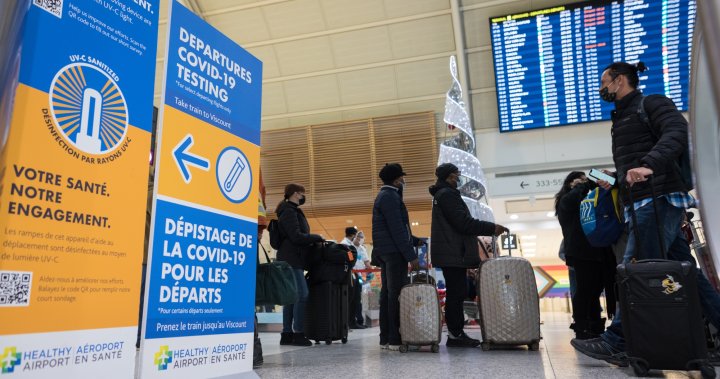
Canadian officials eyed ‘high pandemic potential’ of COVID-19 travellers in Feb. 2020
Global News
Documents obtained by Global News show public health officials believed the 'worst-case scenario' of COVID-19 in Canada would be around 7,000-11,000 cases in urban areas.
Canadian public health officials were eyeing the “high pandemic potential” of infected travellers arriving in Canada from dozens of countries seeing outbreaks of COVID-19 in the weeks just prior to the World Health Organization formally declaring a pandemic, according to newly released documents.
Global News filed an access to information request in spring 2020 requesting all records prepared by the Public Health Agency of Canada regarding “worst case scenarios” and “pandemic planning” during the one-month period prior to the WHO’s formal declaration on March 11, 2020.
In response, the agency released 138 pages of records showing that public health officials believed there was a “high pandemic potential” posed by infected travellers arriving from countries other than China.
“Risk of importation needs to be assessed because while air travel to China is now limited, spread to other countries mean that these countries are now a source of infected travellers coming to Canada,” officials from the Public Health Agency of Canada noted in a Feb. 27, 2020, memo.
In particular, officials said the airports in Vancouver, Toronto, Montreal and Calgary were the most likely arrival points for travellers from “high pandemic potential” countries into Canada.
Yet it wasn’t until March 16, 2020, that the federal government shut down the borders with a sweeping crackdown on foreign nationals from most other countries coming to Canada.
READ MORE: Trudeau closes Canadian borders to most foreign travellers amid coronavirus outbreak
For nearly two months at that point, health officials had been insisting the risk to Canadians from the virus was “low.” That same memo noted that “larger Canadian cities may see hundreds to thousands of moderate to severe cases, requiring supportive emergency preparedness.”











